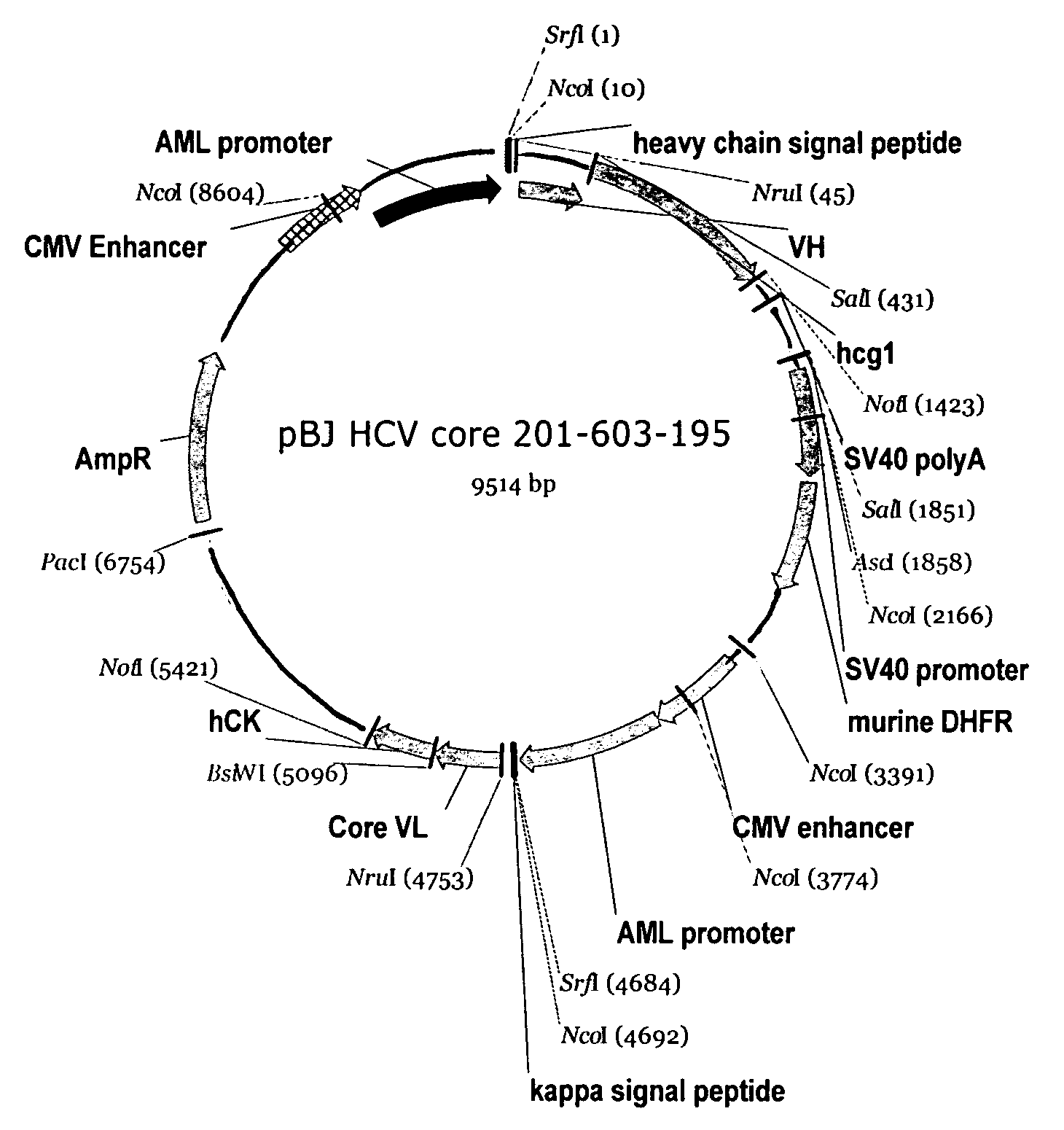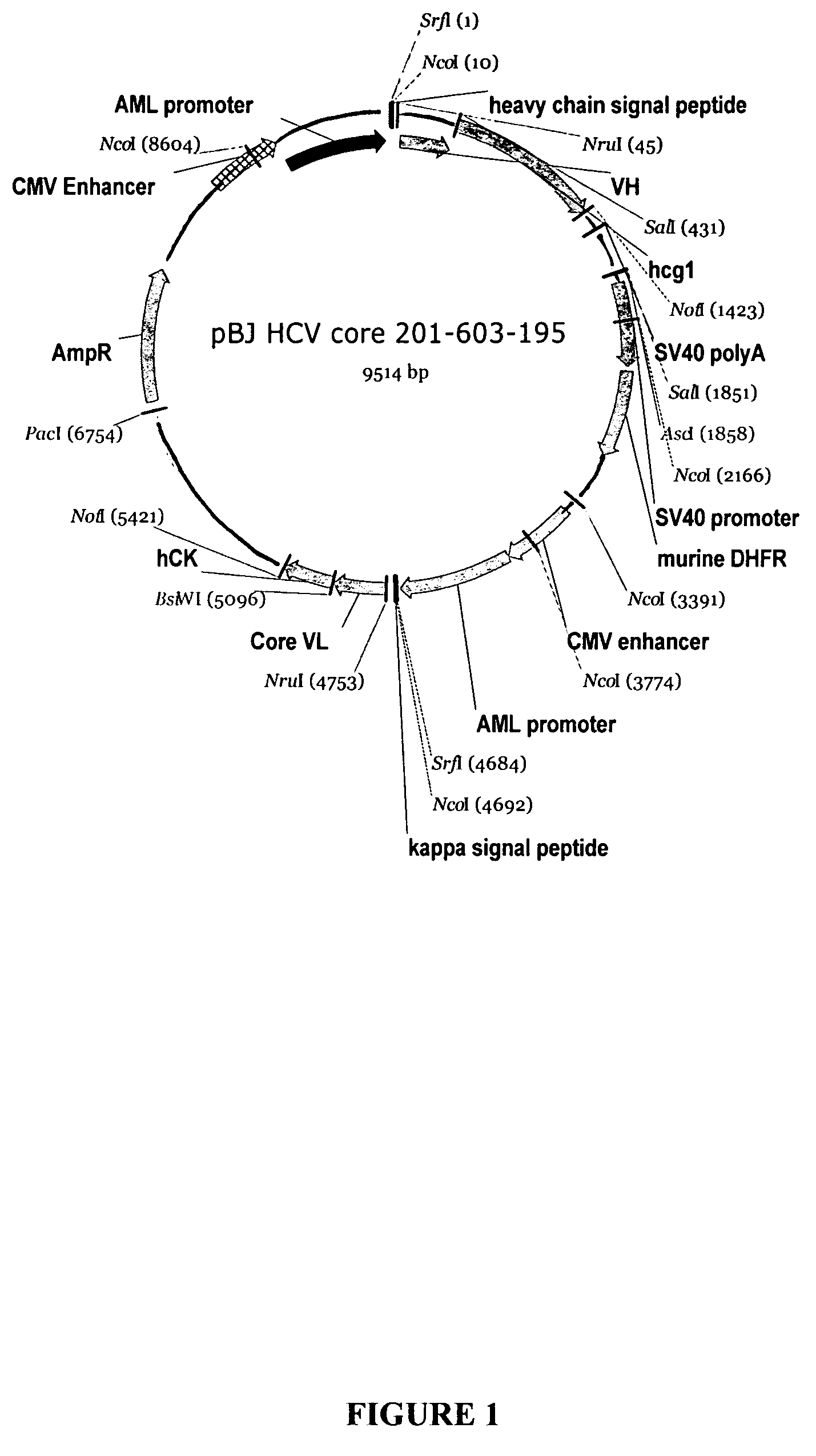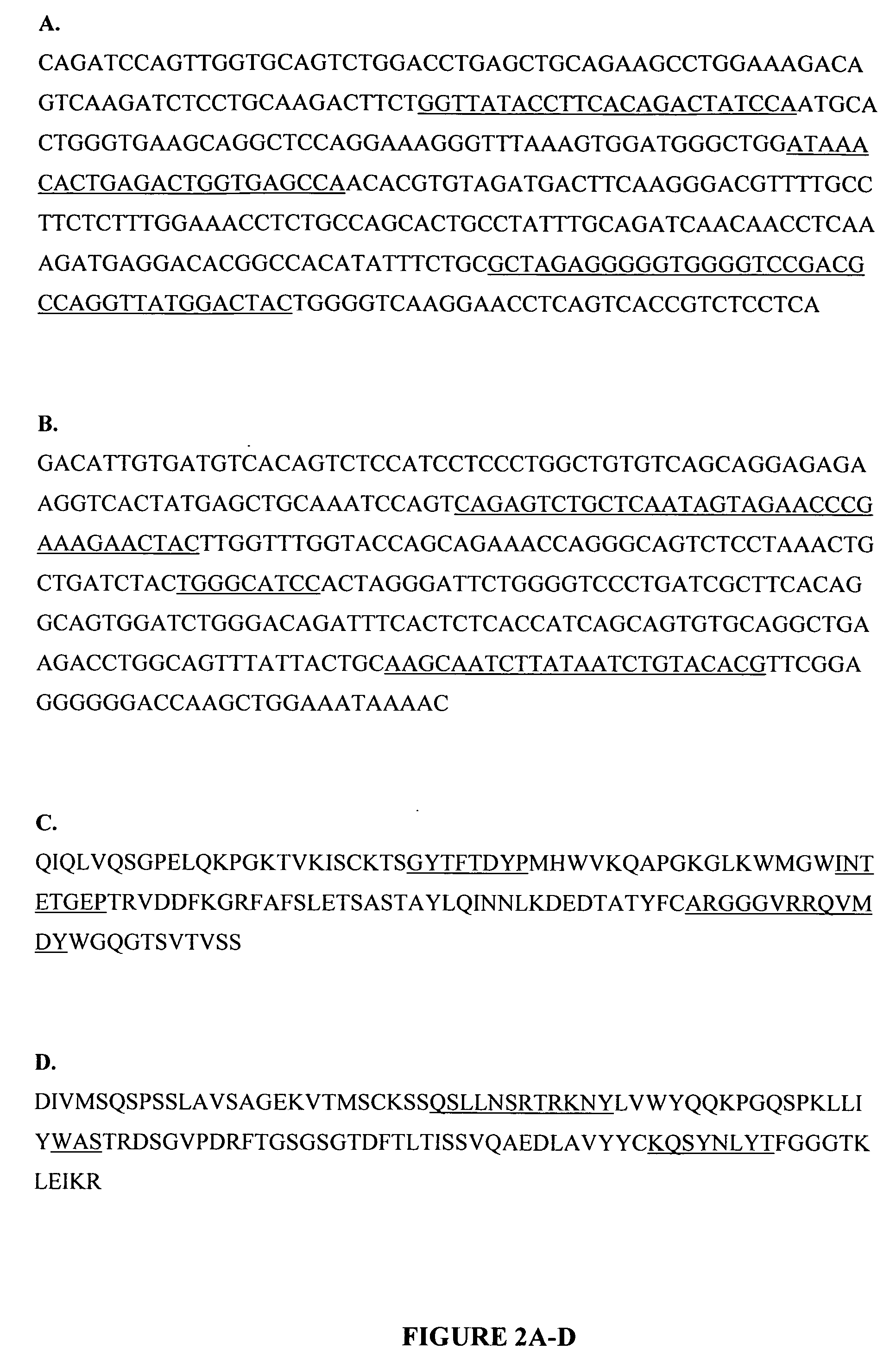Recombinant antibodies against hepatitis C virus and methods of obtaining and using same
a technology of hepatitis c virus and recombinant antibodies, which is applied in the field of recombinant antibodies, can solve the problems of increased regulatory concerns, use of human serum/plasma, and difficulty in sourcing large volumes with high titer and specificity, and achieves the limitations of characterization, cost, and variability
- Summary
- Abstract
- Description
- Claims
- Application Information
AI Technical Summary
Benefits of technology
Problems solved by technology
Method used
Image
Examples
example 1
Preparation of a Human-Mouse Chimeric Antibody Specific for Hepatitis C Virus Core Protein #1
Preparation of a Hybridoma Cell Line
[0138]The hybridoma cell line anti-HCV Core 201-603-195 was developed using the PEG-mediated fusion technique described in Galfre et al., Nature, 266:550 (1977). Briefly, BALB / c female mice were immunized with a purified HCV recombinant core antigen known as pλ core (corresponding to amino acids 1-50 of the HCV polyprotein). The animal boost regimen utilized the Freunds Adjuvant System and sera samples were monitored in an HCV enzyme immunoassay (EIA) until an anti-HCV titer was identified. For the EIA, a HCV recombinant core antigen comprising core amino acids 1-150 (as well as NS3 amino acids 1192-1457) were coated on 96 well EIA plates for at least 1 hour at room temperature, and then were blocked with 2% BSA / PBS buffer for 1 hour. The mouse sera samples were added into the coated wells and the plates incubated for at least 1 hour at room temperature. A...
example 2
Preparation of a Human-Mouse Chimeric Antibody Specific for Hepatitis C Virus NS3 Protein
Preparation of a Hybridoma Cell Line
[0160]The hybridoma cell line anti-HCV NS3 17-903-127 was developed as described in Example 1 using the purified HCV recombinant NS3 antigen known as CKS-33C-BCD in place of the core antigen. The CKS-33C-BCD recombinant antigen corresponds to amino acids 1192-1457+1676-1931 of the HCV polyprotein. The animal immunization regimen utilized one 200 μg boost in the Freunds Adjuvant System, with a pre-fusion boost in saline 2 weeks later.
[0161]The hybridoma cell line anti-HCV NS3 17-903-127 was deposited with the American Type Culture Collection (ATCC) at 10801 University Boulevard, Manassas, Va. on Nov. 21, 2006 under Accession No. ______.
Isolation of mRNA and Identification of Mouse VH and VL Sequences
[0162]mRNA was isolated from the hybridoma cell line anti-HCV NS3 17-903-127 and the mouse VH and VL sequences obtained by RT-PCR as described in Example 1 with res...
example 3
Preparation of a Human-Mouse Chimeric Antibody Specific for Hepatitis C Virus NS4 Protein
Preparation of a Hybridoma Cell Line
[0177]The hybridoma cell line anti-HCV NS4 E99H6C34 was developed as described in Example 1 using the purified HCV recombinant NS4 antigen known as CKS-C100 in place of the core antigen. The CKS-C100 recombinant antigen corresponds to amino acids 1676-1931 of the HCV polyprotein. The animal boost regimen used the Freunds Adjuvant System and sera samples were monitored in an HCV EIA until an anti-HCV titer was identified. The EIA was conducted as described in Example 1 using the CKS-C100 HCV NS4 antigen in place of the core antigen. The mouse spleen cells were fused with the SP2 / 0 myeloma and cultured at 37° C. in HAT-supplemented Dulbecco's Modified Eagle's Medium (DMEM) containing 20% fetal bovine serum (GIBCO). The hybridomas were tested 10-14 days later for anti-HCV reactivity in an EIA. Hybridomas secreting anti-HCV monoclonal antibodies were cloned by sin...
PUM
| Property | Measurement | Unit |
|---|---|---|
| time | aaaaa | aaaaa |
| time | aaaaa | aaaaa |
| equilibrium dissociation constant | aaaaa | aaaaa |
Abstract
Description
Claims
Application Information
 Login to View More
Login to View More - R&D
- Intellectual Property
- Life Sciences
- Materials
- Tech Scout
- Unparalleled Data Quality
- Higher Quality Content
- 60% Fewer Hallucinations
Browse by: Latest US Patents, China's latest patents, Technical Efficacy Thesaurus, Application Domain, Technology Topic, Popular Technical Reports.
© 2025 PatSnap. All rights reserved.Legal|Privacy policy|Modern Slavery Act Transparency Statement|Sitemap|About US| Contact US: help@patsnap.com



